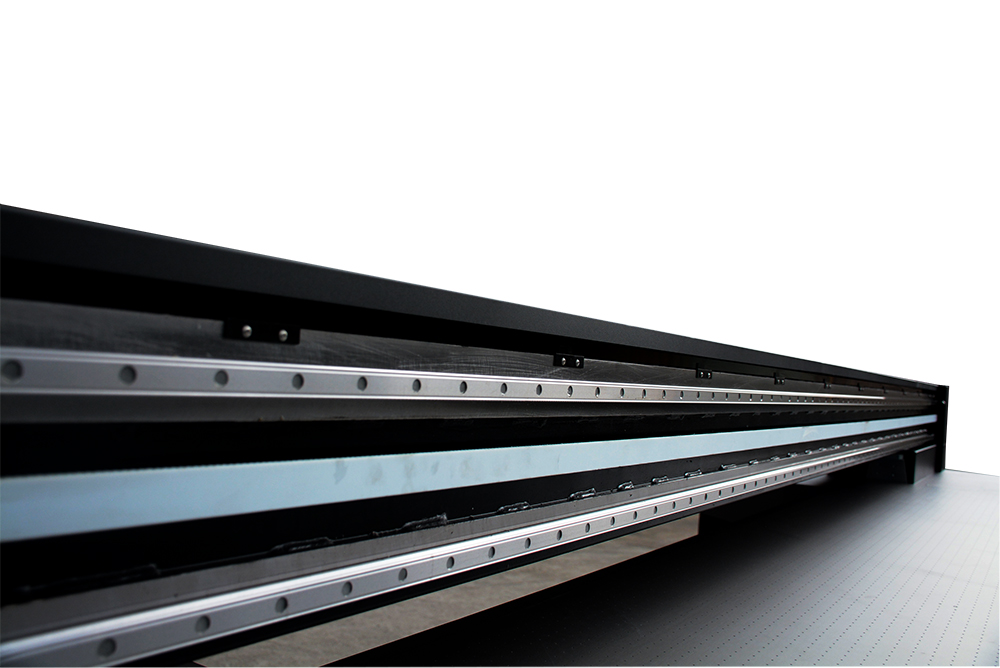UV Flatbed Printer: An Overview of Printing Processes
Welcome to a comprehensive guide on UV flatbed printers! If you’re curious about this technology and how it revolutionizes printing across industries, you’re in the right place. UV flatbed printers are increasingly popular for their versatility, speed, and ability to print on a wide range of materials. This blog will walk you through the printing processes involved, from the basics to advanced techniques, ensuring you gain a clear understanding of how these machines work and their benefits. Let’s dive in!

Understanding the Basics of UV Flatbed Printing
First things first, what exactly is a UV flatbed printer? In simple terms, it’s a large-format printer that uses ultraviolet (UV) light to cure (dry) ink as it prints. Unlike traditional printers that rely on heat or air drying, UV printers use UV lamps to instantly solidify the ink, allowing for immediate handling of the printed material. This technology is particularly advantageous for printing on non-traditional surfaces like wood, glass, metal, and plastics. The UV curing process ensures that the ink adheres firmly to the surface, producing vibrant, durable prints.
The Role of UV Ink in Flatbed Printing
The magic behind UV flatbed printing lies in the ink. UV ink is specially formulated to cure instantly under UV light. This ink comes in various colors, including CMYK (cyan, magenta, yellow, black) and additional spot colors for vibrant and detailed prints. What makes UV ink unique is its ability to print on almost any substrate without the need for pre-treatment or primers. Whether you’re printing on a smooth glass surface or a textured wood panel, UV ink ensures consistent and high-quality results. Additionally, UV ink is eco-friendly, as it doesn’t release harmful volatile organic compounds (VOCs) into the air, making it a safer choice for both operators and the environment.
The Printing Process: Step-by-Step
Now, let’s break down the printing process into manageable steps.
Preparation: The first step is to prepare the substrate. This involves cleaning the surface to remove any dust, oil, or contaminants that could affect the print quality. Once cleaned, the material is loaded onto the flatbed printer’s table, which can accommodate a wide range of sizes and shapes.
Design and Setup: Using specialized software, you create or import your design onto the printer’s interface. The software allows you to adjust the print settings, such as resolution, color management, and ink coverage, to ensure the best possible outcome.
Printing: Once everything is set up, the printer starts the printing process. The print heads move across the substrate, depositing the UV ink in precise patterns. As the ink is laid down, the UV lamps above the print area instantly cure it, ensuring the ink adheres to the surface.
Post-Processing: After printing, some materials may require additional post-processing, such as lamination or varnishing, to enhance durability or add a glossy finish. However, many prints are ready for use immediately after printing, thanks to the instant curing process.
Advantages of UV Flatbed Printing
UV flatbed printing offers several advantages over traditional printing methods.
Versatility: As mentioned earlier, UV printers can print on a wide range of materials, including rigid substrates like wood, glass, and metal, as well as flexible materials like vinyl and fabric. This versatility makes UV printing ideal for various applications, from signage and displays to personalized gifts and home decor.
Speed and Efficiency: UV printers are known for their fast printing speeds, allowing for high-volume production without compromising quality. The instant curing process also eliminates the need for drying time, enabling faster turnaround times and increased productivity.
Durability: UV-cured prints are highly resistant to fading, scratching, and water damage, making them suitable for both indoor and outdoor use. This durability ensures that your prints look vibrant and professional for years to come.
Eco-Friendly: With low VOC emissions and the ability to recycle unused ink, UV printing is a greener alternative to traditional printing methods. This makes it an attractive choice for businesses and individuals looking to reduce their environmental footprint.
Applications of UV Flatbed Printing
The versatility of UV flatbed printing opens up a world of possibilities across industries.
Advertising and Signage: UV printers are a staple in the advertising industry, producing high-quality banners, posters, and vehicle wraps with stunning detail and vibrant colors.
Interior Decor: From wall murals to custom furniture, UV printing allows for personalized and eye-catching designs that transform living and working spaces.
Industrial Applications: In manufacturing, UV printing is used to label products, create custom packaging, and even print circuit boards directly onto surfaces, demonstrating the technology’s adaptability across sectors.
Art and Personalization: Artists and designers love UV printing for its ability to bring their creative visions to life on unique materials, from sculptures to musical instruments.
Healthcare and Education: In hospitals, UV printing is used for labeling medical equipment and creating educational displays, while in schools, it helps produce interactive learning materials and decorative classroom elements.
Innovations in UV Flatbed Printing Technology
As technology evolves, so does UV flatbed printing. Recent advancements include:
Higher Resolution: Modern UV printers offer resolutions up to 1200 dpi (dots per inch), enabling photo-realistic prints with intricate details.
Multi-Material Compatibility: Newer models can handle even more diverse substrates, including 3D objects, expanding the technology’s reach.
AI Integration: Some printers now incorporate AI for automated color calibration and defect detection, improving efficiency and reducing waste.
Eco-Enhancements: Innovations like water-based UV ink reduce environmental impact, catering to sustainability goals.
Conclusion
In conclusion, UV flatbed printing represents a significant leap in printing technology, offering unmatched versatility, speed, and durability. Whether you’re a business owner, a creative professional, or a hobbyist, understanding the printing processes behind this technology can unlock new possibilities for your projects. As the industry continues to innovate, we can expect even more efficient and eco-friendly solutions, further broadening the impact of UV printing across fields. So, why not explore this technology for your next project? The future of printing is bright, and UV flatbed printers are at the forefront of this revolution.
